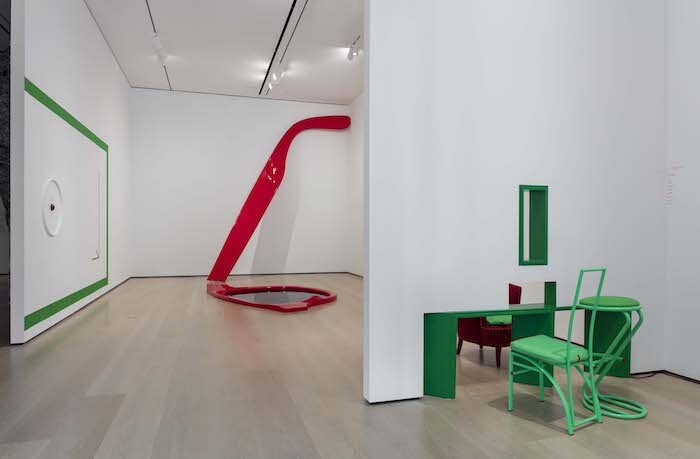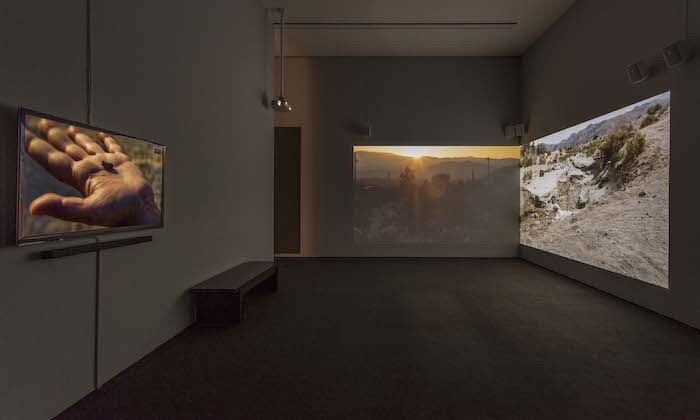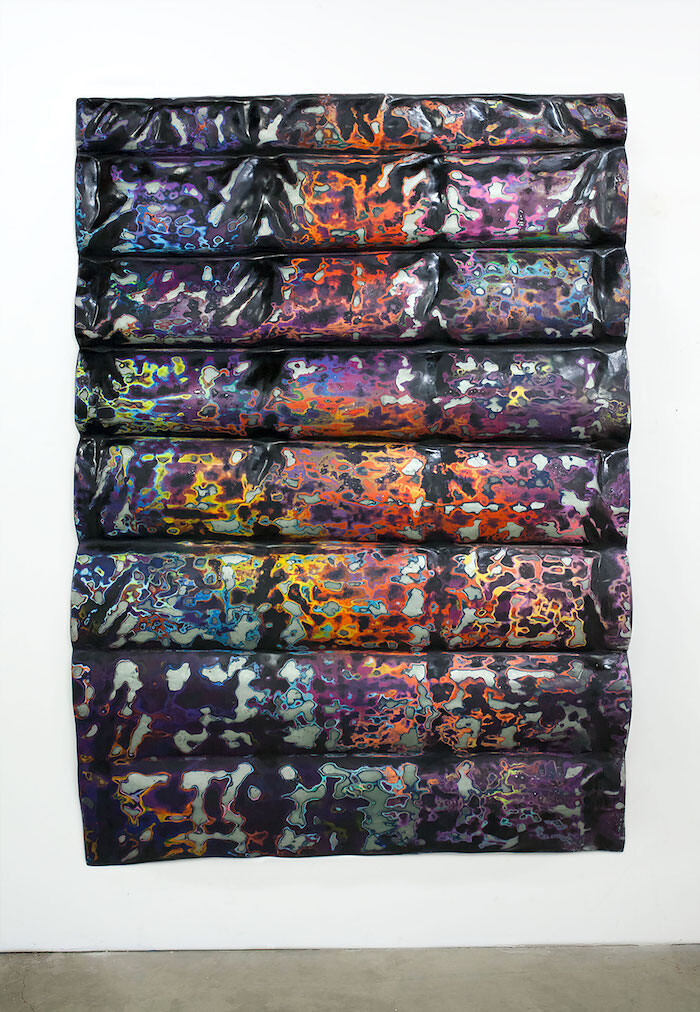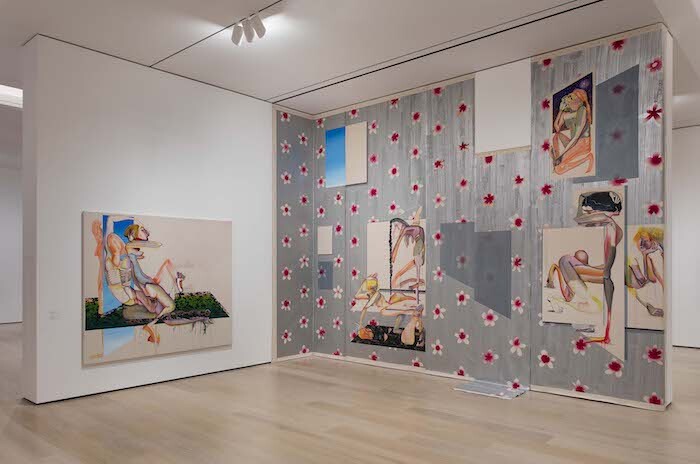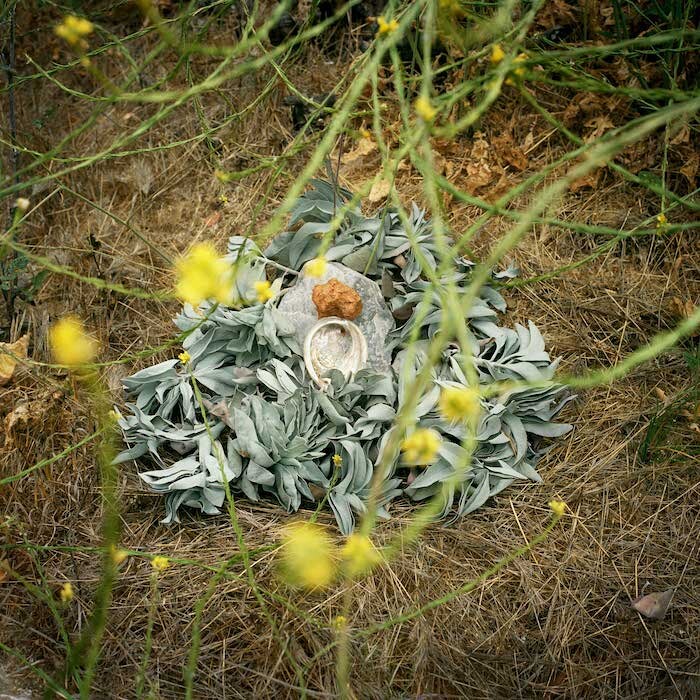Not so much a city as an unevenly populated, multi-centered megalopolis, and not so much a year as a point in an escalating concatenation of national and global crises, there might seem to be no possible way to get “Made in L.A. 2018” right. Add to that the divisions within LA’s art community that mirror many of the historically entrenched divisions within the city itself—between east and west, north and south, white and non-white, gentrified and gentrifying, young and no longer young, left and far left. If artists, as “Made in L.A. 2018” curators Anne Ellegood and Erin Christovale write, are “some of our most active citizens,” then biennial curators might be something akin to well-intentioned politicians, expected to represent a plurality of impassioned positions while trying also to retain sight of their own.
Against these odds, Ellegood and Christovale have succeeded in organizing an exhibition that is hard to fault, in large part because of their scrupulous avoidance of curatorial overreach. While Hamza Walker and Aram Moshayedi’s “Made in L.A. 2016” (pretentiously subtitled by the four-word poem “a, the, though, only,” and including multidisciplinary contributions both inside and outside the museum) was clearly intended to stretch the possibilities of its form, no such impulse exists in the modestly unthemed and unsubtitled “Made in L.A. 2018.” In the tumultuous years since the first “Made in L.A.” in 2012, priorities of all kinds have changed, and fussing over questions of what a local biennial could or should be seems less urgent than asking how locally produced art can approach current issues on a national or global scale.
As a result, the works in the exhibition are subject to a series of recurrent transferences: the individual body standing in for the social body, the landscape standing in for an individual body, geology for urbanity, the cosmic for the mundane. Everywhere, small artifacts, minor histories, and intimate experiences are translated into ambitiously scaled artworks that engage with major themes. Take the artist MPA, for example, whose contribution connects two separate halves of a pair of giant red sunglasses—reproduced in fiberglass and plexiglass, each lens perhaps six-feet across—by a meandering strip of narrow red resin. Faultline (2008) summons ideas of socio-political divisions as well as geological ones; for Tableau (2018), a stylized seating arrangement either side of a wall, visitors are encouraged to sit and find common ground.
Next door, the gallery is filled with more penises than I could count, all chopped into meaty round slabs. The sculptural installation paradigm lOst (2018) is by Charles Long, who observed that the dead tree stumps around his home on Mount Baldy bear a resemblance to cross-sections of the human penis. Long’s past work has examined the legacies of modernist sculpture, but here formal references to Constantin Brancusi, Alberto Giacometti, and Salvador Dalí are subsumed within a dramatic mise-en-scene that enacts a brutal punishment on the male member in symbolic retaliation for the real violence done to the environment by the patriarchy.
If that sounds heavy-handed, that is unfair to Long whose installation is funny, self-aware, and strangely touching. In fact, throughout the exhibition, works dealing with bummer issues such as patriarchal aggression, environmental exploitation, and colonialism never fall into moralizing self-righteousness, and as well as being politically astute are more often than not witty, visually seductive, and materially engaging. Adjacent to paradigm lOst, Neha Choksi’s multi-part video installation Everything sunbright (2018), about nothing less than humanity’s conflicted relationship with the sun, is a feast for the eyes and the mind. Nearby hangs a selection of Linda Stark’s brilliant relief paintings, John Houck’s layered trompe-l’oeil photographs, and Rosha Yaghmai’s gorgeous resin screen through which she projects abstract photographs taken by her father.
Over and over, I found myself taken with the works’ technical virtuosity, which manifests in diverse ways, from Diedrick Brackens’s tapestries to Christina Quarles’s wall-filling acrylic-on-canvas assemblage Forced Perspective (And I Kno It’s Rigged, But It’s tha Only Game in Town) (2018) and Celeste Dupuy-Spencer’s George Jones Greeting the Newest Members of Heaven’s Band (2017), which disrupts an onstage group of country musicians with ethereal, phantasmagoric abstraction in one of the best paintings I’ve seen this year. EJ Hill rose to the challenge of filling the Hammer’s Vault Gallery, creating a blue-walled environment for Excellentia, Mollitia, Victoria (2018), an installation based around documentation of performances in which he ran “victory laps” around every educational institution he’d attended, and including a performance in which Hill himself stands, heroically still, on a winner’s podium for the duration of the exhibition.
It is pleasing to note (as every review of “Made in L.A. 2018” undoubtedly will) that the artists involved identify predominantly as female (around two-thirds), non-white, and/or queer. The show’s success is not because of demographics alone, but because of the resonant intersections between the perspectives of the participating artists. Grouped in proximity to a display of paintings from the 1960s and ’70s by 97-year-old Venezuela-born Luchita Hurtado are works by Naotaka Hiro, Mercedes Dorame, Nancy Lupo, and Suné Woods that collectively took my breath away. My favorites among Hurtado’s paintings depicted her own body as she looked down at it, while standing on vibrantly patterned traditional weavings. Hiro’s performatively produced paintings and bronze sculpture similarly derive from his physical experience of his own body, and Lupo’s sculptures of benches arise from encounters between her body and the urban environment. Dorame—of the indigenous Gabrielino-Tongva tribe, Los Angeles’s first people—presents photographs taken around her non-native grandparents’ home alongside a sculpture reminiscent of a ceremonial platform, incorporating recreations of 75,000-year-old carved “cog stones” from sacred indigenous sites. Woods’s video installation Aragonite Stars (2018) shows bodies of water, and bodies in water, projected on blue tarps, informed in part (according to the wall label) by the significance for indigenous peoples of natural mineral springs.
“Made in L.A. 2018” tests the truism that people want to see themselves—or people like them—represented in their cultural institutions. The biennial, and the Hammer more broadly, has developed a reputation for inclusivity. On the opening night, cars trawled fruitlessly for parking spots while, inside, the crowds swelled to near-riotous intensity. When I visited a week later, the galleries were busy with a more diverse group of visitors than I’ve seen at any exhibition in recent memory. As an institution, “Made in L.A.” at the Hammer has finally grown into what it always should have been: a biennial for everyone.

